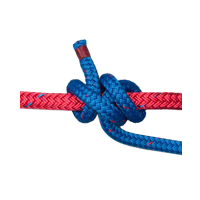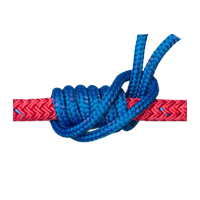Prusik Knot (Triple Sliding Hitch) Tying
Use a piece of cord formed into a loop. Pass the knot around the rope three times inside the loop. Make sure the turns lie neatly beside each other and pull the knot tight.
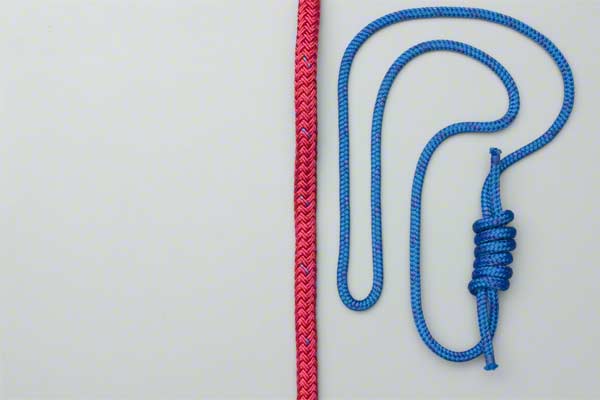
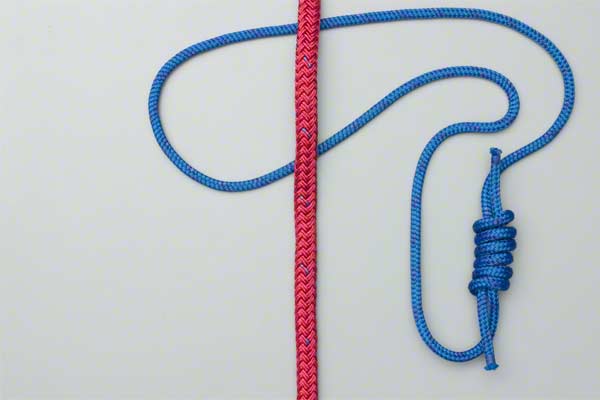
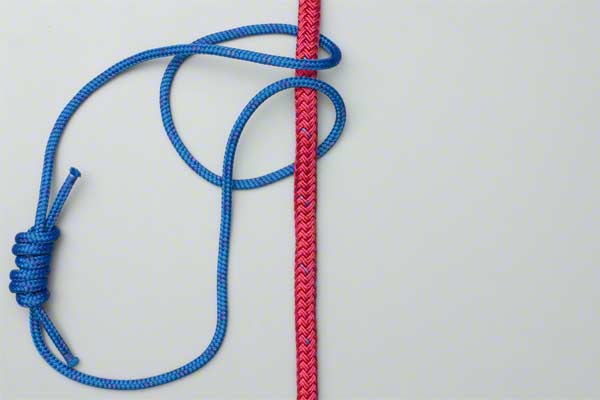
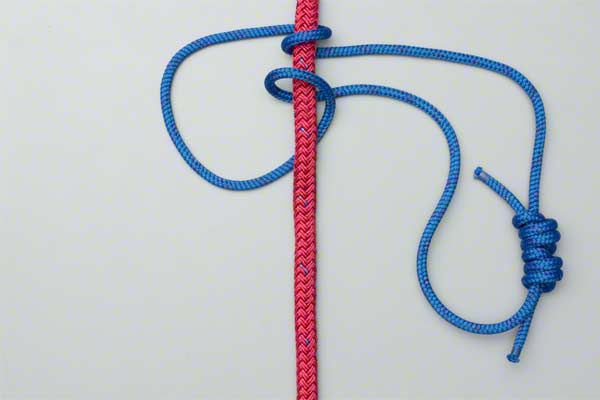

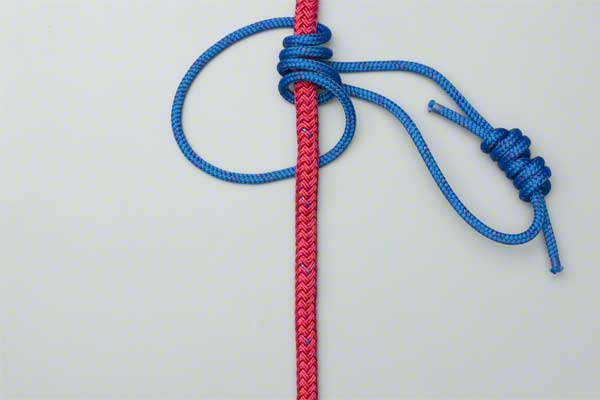
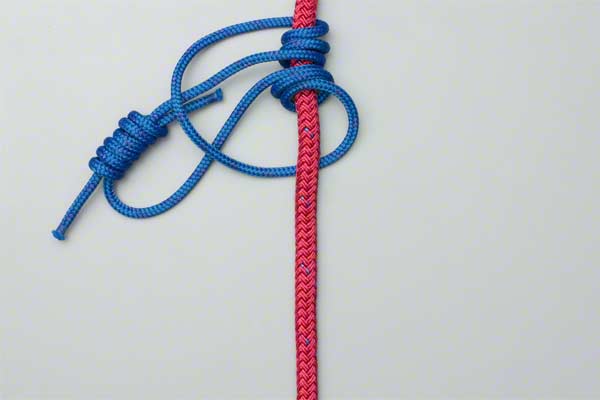

Prusik Knot (Triple Sliding Hitch) Details
History: The Prusik knot was developed in 1931 by Dr.Karl Prusik (sometime president of the Austrian Mountaineering Club and often misspelled "Prussik".) It appears to be identical in structure to a knot described by Ashley for hoisting a spar. (ABOK # 1763, p 300), but Ashley did not name this knot and did not describe the slide and grip feature. The knot requires a "Prusik Loop"
Uses: Its principal use is allowing a rope to be climbed - ascending or "Prusiking". Two Prusik loops are alternately slid up the static rope: a long Prusik loop reaches the climber's foot – to allow leg power for ascending, and a second short Prusik loop is attached to the harness – to allow sitting. In rescue work, if a climber has to be pulled up, a Prusik loop can hold a pulley block purchase system on a climbing rope.
Making Prusik Loops: Prusik loops are constructed by joining together the two ends of accessory cord (5 or 6 mm) using a Double Fisherman's (or a Triple Fisherman's).
Choosing a length: Many factors govern the length of rope used to make a Prusik Loop; what it will be used for; the number of wraps that will used in the Prusik Knot; the diameters of the ropes; and, the height of the user.
However, as a rough guide, the lengths of cord used to make a pair of loops will likely start in the range: 5 ft (1.5 meters) for the shorter one and 6 ft (1.83 meters) for the longer one.
Slide and Grip Knots: Because the Prusik is a symmetrical slide and grip knot, it is useful if a load might need to be applied in either direction. For loads which are always applied in the same direction other knots are preferred such as the Klemheist or the Bachmann pictured here.




